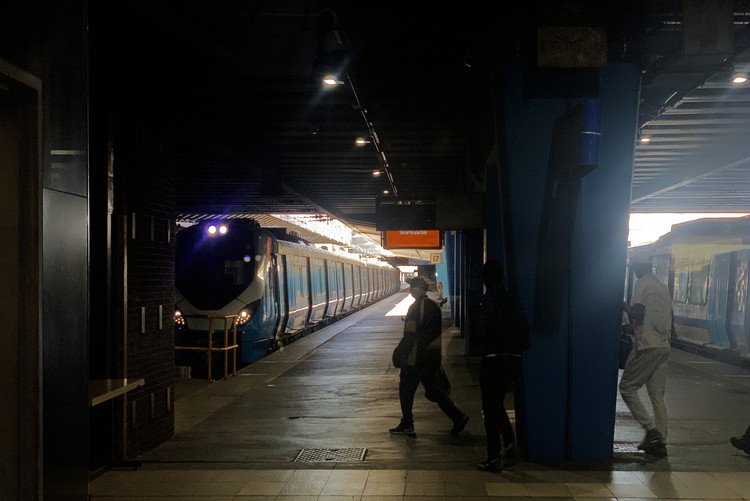
7 May 2025
At Cape Town Central, wheelchair users can easily access the platform. But getting onto the train still requires help from staff. Photos: Ashraf Hendricks
In 2016, Metrorail said that plans to make trains accessible to disabled people in Cape Town were “virtually complete”. Nine years later, though the new trains do have spaces for wheelchairs, platforms at most Cape Town stations are inaccessible to wheelchair users. Even those who do manage to get onto the platform can’t get onto the trains without help.
The trains are “simply not accessible,” says Jeremy Opperman, a board member of the Western Cape Network on Disability.
In 2016, then Metrorail spokesperson Riana Scott told GroundUp that universal accessibility was one of the “acknowledged priorities” of the Passenger Rail Agency of South Africa (PRASA). “A universal access policy inclusive of design, norms, standards and guidelines is virtually complete. PRASA’s new trains will take into account special needs of passengers.”
Nine years later, the new trains do indeed have space for wheelchairs. But access to platforms is near impossible for wheelchair users at many stations GroundUp visited.
Entrance 1 at Rondebosch train station only has stairs.
At all the stations we visited, there is a gap between the platform and the train, making it impossible for wheelchair users to board the train safely without assistance, even if they have made it onto the platform.
Except at Cape Town station, there were few staff when we visited, hardly any signage or audio announcements, and a lack of security.
Most stations can’t be accessed easily and trains can’t be accessed from the platform “without some form of additional ramp”, says Opperman, who describes himself as a “veteran Metrorail user”. He used the trains for 51 years, on the Cape Flats and the Southern lines. He is visually impaired.
Anthony Ghillino, also a board member of the Western Cape Network on Disability, recently tested the accessibility of Cape Town’s trains. He is quadriplegic and brought his own personal ramp for the test. He says on board the train, he felt comfortable as there was space inside for wheelchair users and there were features for people with other impairments.
But getting on and off the train was challenging, he says. If he hadn’t brought the ramp he would have been stuck on the train.
“It’s adequate on the train. But it’s no good having a train that is accessible if the environments that lead to the train and platform are not accessible.”
He said he needed help, even at Cape Town station, to purchase a ticket, as the ticket kiosk is too high for a wheelchair user.
Ghillino has joined a new disability forum for PRASA, which aims to include people with disabilities in the creation of designs for universal access.
The idea of the forum is to have people with disabilities provide advice and assistance to ensure that design is done properly. “It’s not about disability, it’s about all people being accommodated,” says Ghillino.
On 1 April, Zino Mihi, PRASA and Metrorail spokesperson, told GroundUp that improvements were in the pipeline and a consultant had been engaged on universal access. She said station access, platform access, and platform train interface would all be taken into account.
GroundUp then asked her to explain why this was only happening now in spite of promises made nine years ago. We also asked how much money is being put into the project, what caused the delays, and which stations have universal access. We first sent the questions on 7 April and followed up several times. We have not had any answers.
Claremont is one of the few stations with a ramp.